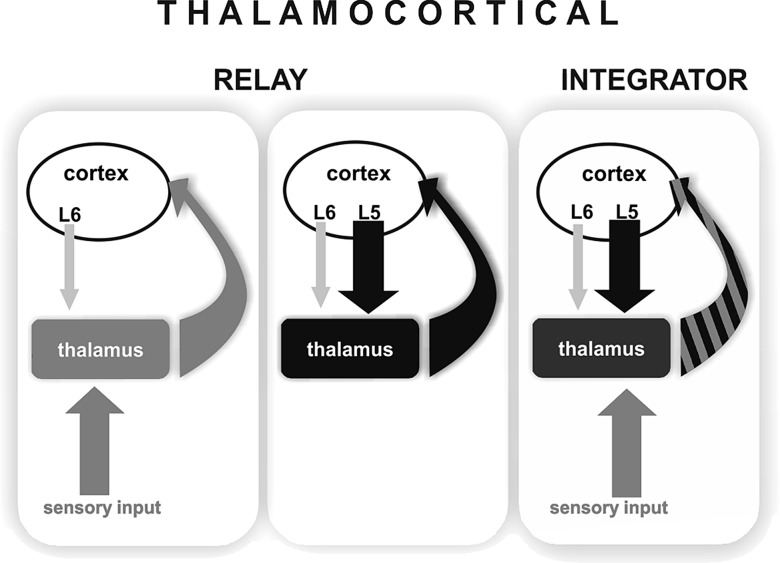Figure 9.
Modes of operation in the thalamocortical system. (Left) Sensory drive. Thalamus faithfully relays sensory information (gray arrow) to the cortex (curved gray arrow). Thalamic activity is determined by the subcortical driver input while cortex modulates sensory transfer via weak layer 6 synapses (thin light gray arrow). (Middle) Cortical drive. Strong cortical signals from layer 5 (black arrow) drives thalamocortical activity which is fed back to cortical circuits (curved black arrow). (Right) Integration of convergent driver inputs. A single thalamocortical neuron receives convergent driving inputs originating from subcortical (gray arrow) and cortical (black arrow) sources. The output (curved black–gray striped arrow) represents the integrated driver activity arising from different sources. Note that the cortical influence on thalamus is qualitatively different in the first and third conditions. In case of sensory drive, layer 6 only modulates the ascending information whereas in case of driver integration, a strong instructive cortical signal summates with sensory information.

